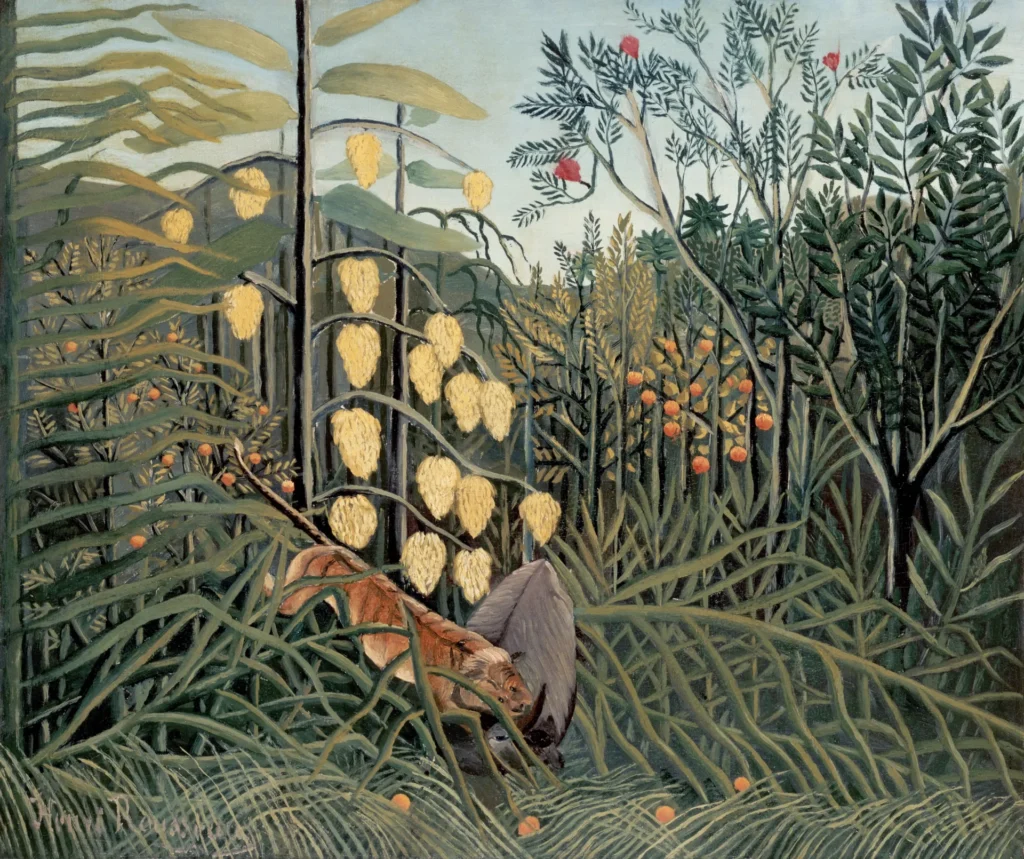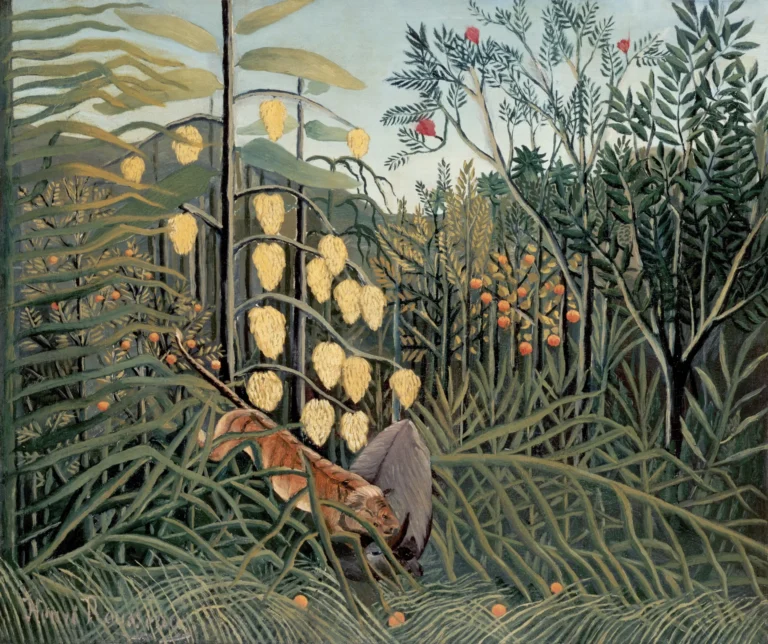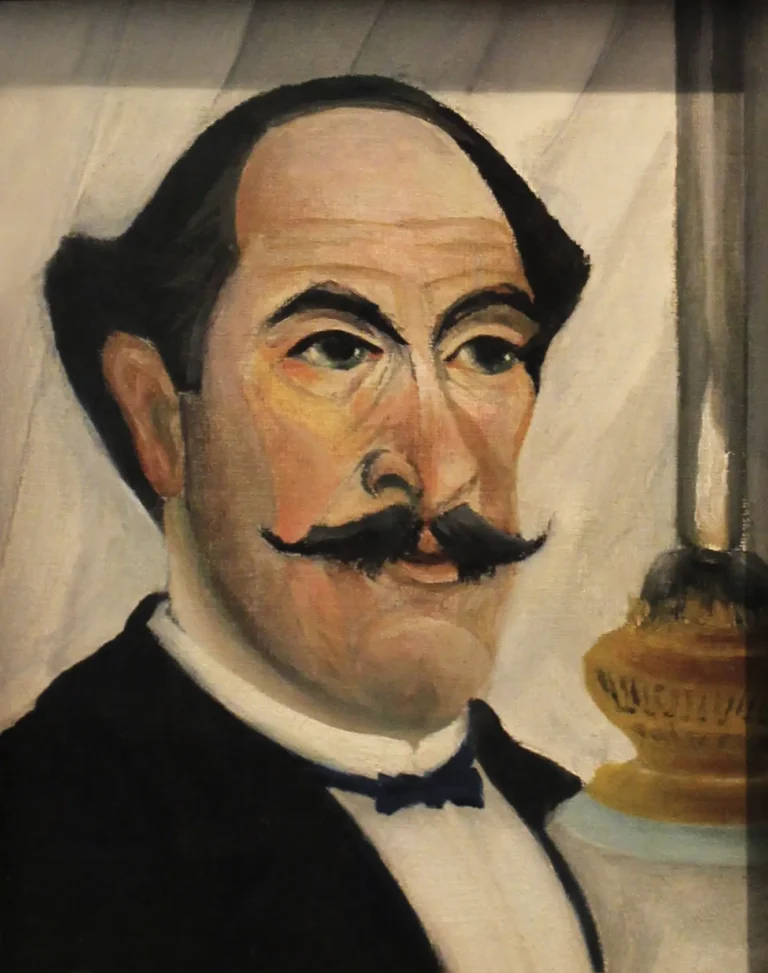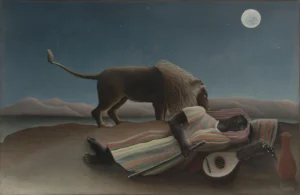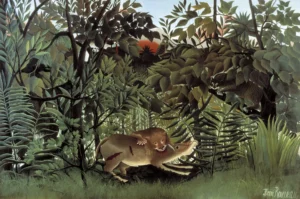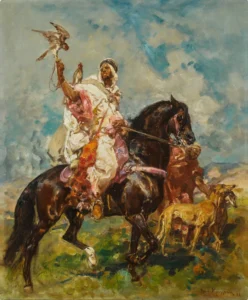The Fight of a Tiger and a Buffalo
Fight Between a Tiger and a Buffalo is an oil on canvas painting by Henri Rousseau, created in 1908. The artwork is an example of Naïve Art (Primitivism) and is currently part of the collection at the Hermitage Museum in Saint Petersburg, Russia.
Year 1910
About the Artwork
Depiction
- The painting portrays a tiger attacking a buffalo in a dense jungle.
- The tiger is depicted pouncing on the buffalo with bared teeth and extended claws.
- The buffalo appears to be recoiling from the attack.
- The painting is marked by vibrant colors and bold outlines.
- Rousseau's use of perspective and scale is evident in the disproportionately large plants in the foreground, contributing to the painting’s dreamlike atmosphere.
- Rousseau, who never left France, drew inspiration for his jungle scenes from travel books and visits to the Paris Botanical Garden.
- He relied on his imagination, travel books, and the Paris Botanical Garden to conjure up the jungle environment.
- The painting demonstrates Rousseau's understanding of the food chain, with the tiger as the buffalo's predator.
- Rousseau painted "Fight Between a Tiger and a Buffalo" using oil on fabric.
- To ensure the painting's longevity, the fabric was primed with gesso before the application of oil paints.
- "Fight Between a Tiger and a Buffalo" is one of Rousseau's largest and most important compositions.
- Rousseau's unique artistic vision and detachment from traditional academic techniques is highlighted by the painting's static, almost serene quality, despite the ferocity of the subject.
- Pablo Picasso and other avant-garde artists admired Rousseau’s originality and the purity of his vision. The painting greatly inspired Picasso to begin the Avant-garde revolution.
- Rousseau was working on this painting while imprisoned for fraud in December 1907 and was granted an early release to finish it for exhibition at the Salon des Indépendants.
Did You Know
Henri Rousseau had no formal training in art, yet his unique style was instrumental in paving the way for modern art movements, showcasing the power of individual creativity.
Despite never visiting a tropical environment, Rousseau’s Tropical Forest with Monkeys was inspired by his observations at botanical gardens and zoos throughout Paris.
Rousseau was working on this painting while imprisoned for fraud in December 1907 and was granted an early release to finish it for exhibition at the Salon des Indépendants




